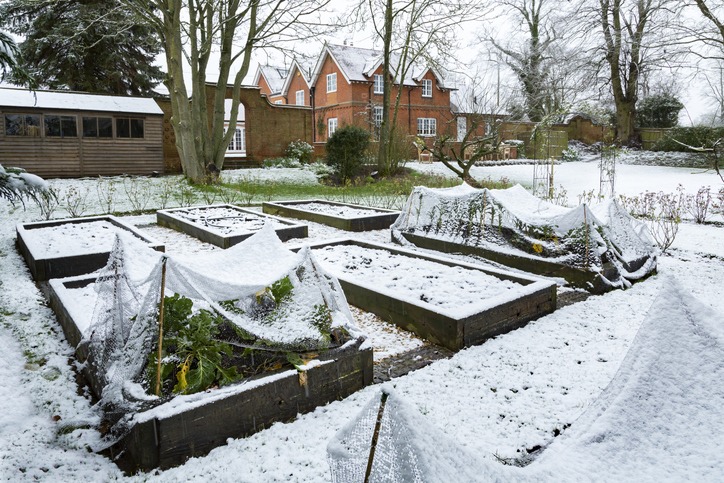Even though you might not it, winter is already around the corner. And that means colder temperatures and less sunlight. If you’re not prepared, your garden could suffer during this time. Many gardens go into dormancy during winters, with plants dying back and growth slowing down.
But this doesn’t mean that you can’t still enjoy your garden during the winter months! With a little bit of preparation, you can keep your garden looking beautiful all year round. So today we’re going to give you some tips on how to get your garden ready for winter.
1. Clean Up the Garden
As winter approaches, gardeners everywhere begin the task of cleaning up their gardens in preparation for the cold months ahead. But why is it so important to clean up your garden before winter sets in?
According to my favorite gardening site, there are actually several good reasons. First of all, removing dead leaves and other debris helps to prevent the spread of disease. Dead leaves can harbor diseases and pests that can infect your plants come springtime.
Furthermore, cleaning up your garden helps to remove hiding places for critters looking for a warm place to spend the winter.
2. Mulch the Garden
Mulching your garden is another crucial step in preparing it for winter. Mulching helps protect plants from cold weather damage and helps keep the soil moist. Snow and ice can be a gardener’s worst nightmare.
Mulching, on the other hand, can provide your plants with much-needed protection from the cold. You can use either organic or synthetic mulch, depending on your preferences. Just be sure to cover the entire garden bed with mulch to provide maximum protection.
3. Add Some Winter Plants
If you want to add some plants to your garden specifically for winter, there are a few options available. Hardy perennials such as hellebores and cyclamen work well in cold weather conditions, and evergreens like holly and ivy can add color to your garden during winter.
Just be sure to plant these plants before the first frost hits, so they have enough time to get established before winter arrives.
4. Replace The Annuals
Annuals are plants that complete their life cycle in one season, and they must be replanted every year to keep them going. Annuals are particularly vulnerable to winter damage, as they are not well-suited to the colder temperatures and lack the heat-tolerant root systems of perennials.
For these reasons, it is important to replace annuals in the garden before winter arrives. By doing so, you can ensure that your garden retains its beauty and vitality all year round.
5. Divide The Perennials
As the colder months approach, it’s important to take care of your garden so that it can thrive in the spring. One of the best ways to do this is to divide the perennials. This involves digging up the plants, separating them into smaller sections, and replanting them in different areas.
Not only does this give the plants more space to grow, but it also helps to improve drainage and aeration. In addition, dividing perennials before winter helps to prevent them from being damaged by frost or heavy snowfall.
6. Frost Protection
One way to protect plants from frost is to wrap them in burlap or other breathable fabric. This will create a microclimate around the plant, trapping heat and moisture while allowing air to circulate.
Another option is to build a makeshift greenhouse out of plastic sheeting or old windows. This will provide your plants with additional insulation from the cold. Finally, you can try covering your plants with a layer of mulch. This will help to keep the ground frozen, preventing roots from being damaged by the frost.
By taking these simple steps, you can help ensure that your plants survive the winter season.
7. Grow A Cover Crop
Gardeners know that there is always some risk when it comes to growing plants outdoors. Severe weather can destroy entire crops, leaving gardeners with nothing to show for their hard work.
One way to help protect against this type of damage is to grow a cover crop. Cover crops are usually fast-growing grasses or legumes that can be planted in the fall and early winter. When the weather turns cold, the cover crop will die back, but its roots will remain in the ground.
This root system helps to protect the soil from erosion and wind damage, and it also helps to insulate the ground, keeping it warmer during the coldest months of the year.
Winter is knocking at the door and it’s time to get your garden in order! Follow these simple tips to make sure your plants are well taken care of during the cold months. Have a happy winter gardening season!

